The synovitis of the shoulder joint is a disease that each of us can face, so it's better just to be armed with the fullest knowledge of the disease just in case, in order to be able to overcome it.
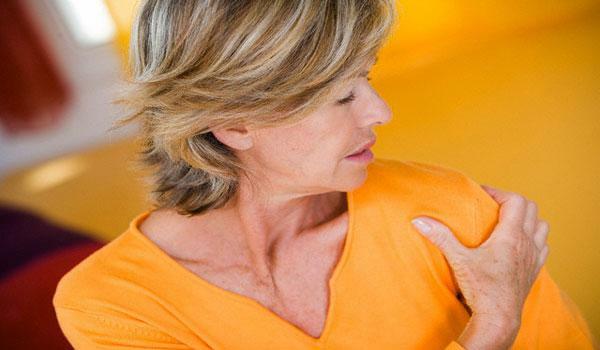
Synovitis of the shoulder joint
So, a synovitis of the shoulder joint is a disease that is the development of inflammation in the joint area, accompanied by a swelling in the chest. Features of the disease are such that in most cases only one joint suffers from it. But everywhere there are exceptions, so that synovitis can character multiple lesions.
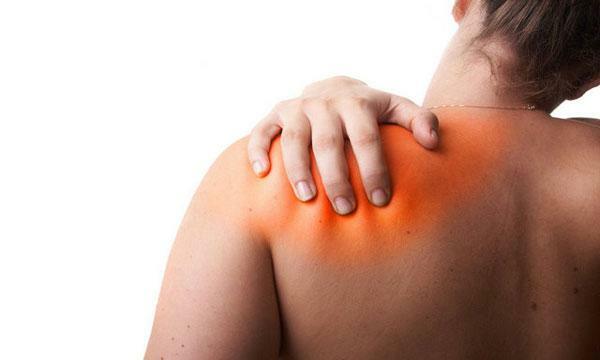
The synovitis of the shoulder joint is an inflammatory process that develops in the synovial membrane and is characterized by the accumulation of fluid in the joint cavity.
The development of the disease is inextricably linked with the inflammation of a special membrane - the synovial membrane. It performs the functions of a kind of "rug", lining the surface of the joint capsule from the inside. In addition, she is responsible for the allocation of synovial fluid. If the synovial membrane is damaged, the volume of secreted fluid increases significantly. Due to the change in the chemical composition of the secreted substance, an effusion forms in the joint.
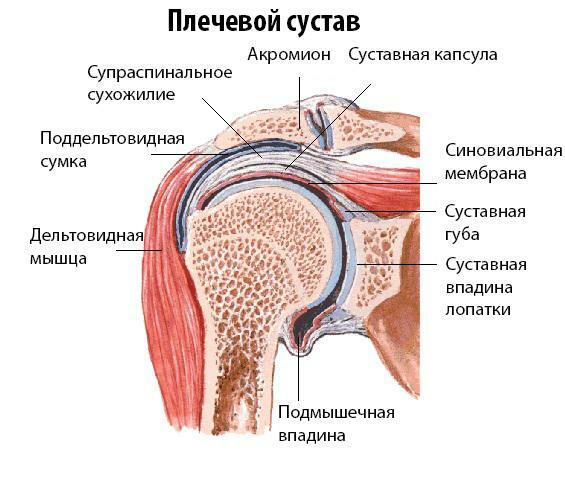
Anatomy of the joint
Accumulation of this fluid leads to the formation of a swelling in the chest of the sick person, which, as we have already seen, is one of the external signs of the synovitis of the shoulder joint.
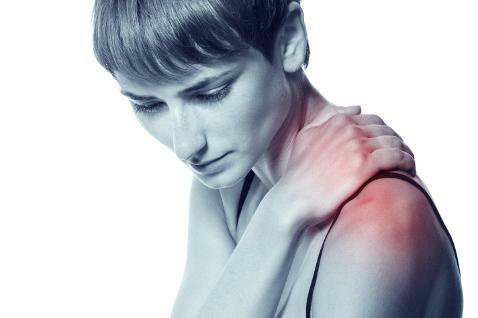
Pain and swelling with synovitis
Content of material
- 1 Types
- 2 Reasons for
- 3 Clinical manifestations
- 3.1 Complications
- 4 Diagnosis
- 5 Treatment
- 6 Preventive measures
- 6.1 Video - Chronic synovitis
Species
To date, experts distinguish two main subtypes of pathological processes: infectious andaseptic, which is also called allergic or traumatic.
Depending on the shape and duration of the disease, the synovitis of the shoulder joint can be acute and chronic.
| Kind | Description |
|---|---|
| Acute | Develops in the early stages of the disease. It is expressed by the deformation of the joint - it becomes more smooth, the sharp features disappear. Characteristic increase in body temperature and the appearance of severe pain. Possible limitation of motor functions. |
| Chronic | Being quite rare, it still brings a lot of trouble to a person. In chronic form, the lymphatic circulation and circulatory systems are violated, but not throughout the body, but where the inflammatory process is most pronounced. |
Reasons for
Statistics show that in most cases, synovitis is the result of a shoulder injury: dislocation, fracture, or simply a bruise.
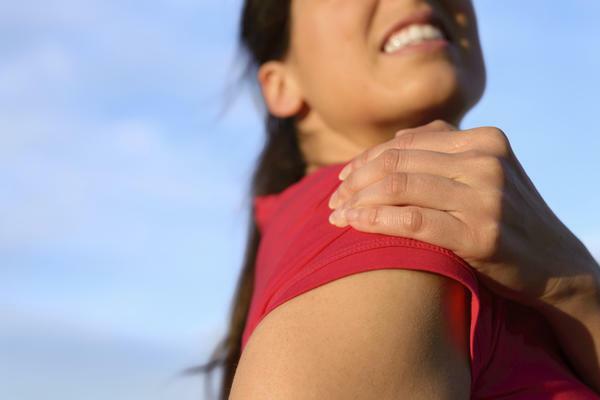
Shoulder injuries as the cause of synovitis
Synovitis may be caused by a chronic shoulder injury. It's about cases where people are engaged in a certain type of activity, implying a constant load on the shoulder. These include athletes, painters, plasterers, etc. In this case, one can not say that the joint is damaged, but the "fragments" of the cartilaginous tissue irritate the synovial membrane.
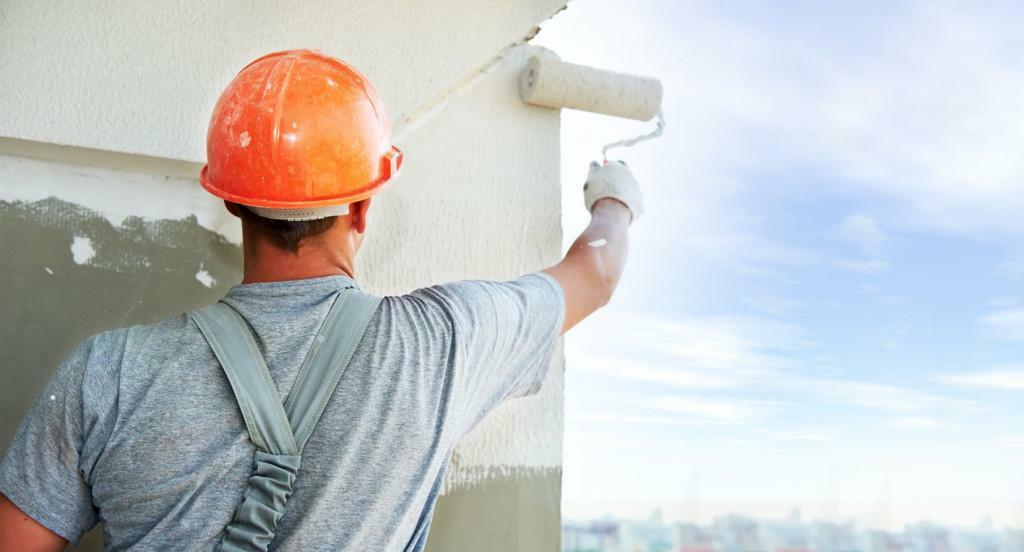
Systematic shoulder strain and the development of synovitis
The synovitis of the shoulder joint can develop:
- after unsuccessful falls;
- after long, monotonous shoulder movements( swimming, basketball);
- as a result of failures in the endocrine system;
- as a result of allergic reactions( in the event that allergens will permanently affect the body);
- after previous infectious diseases;
- as a result of strong shocks, stress;
- because of getting into the synovial membrane of the pathogens of the infection.
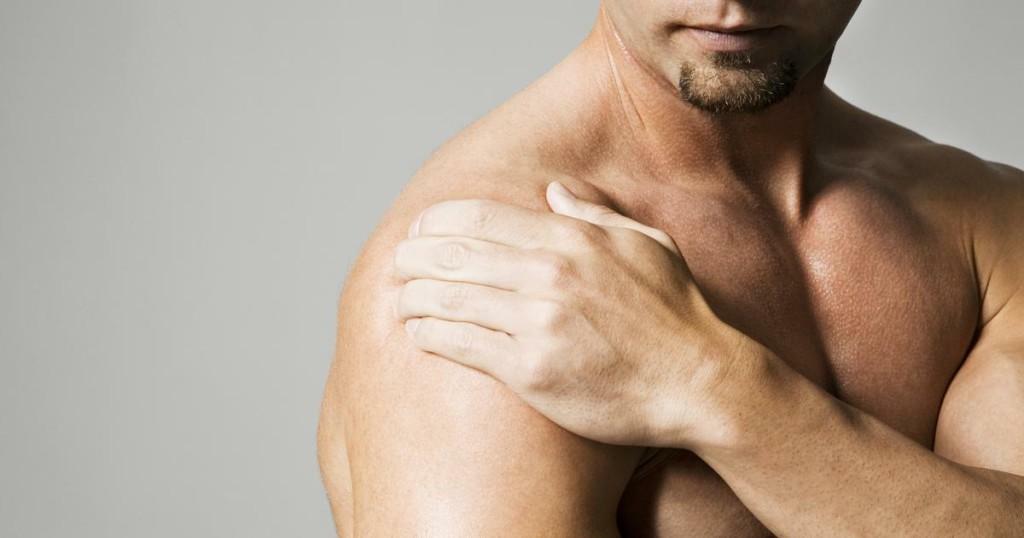
Synovitis may develop due to infections
Clinical manifestations of
As we have already explained, the synovitis of the shoulder joint can be provoked by various causes and have variable forms. Depending on these factors, the rate of progression of the disease varies. In the case of an infectious synovitis, a person will notice the first signs in a matter of hours, with non-infectious form this may take several days.
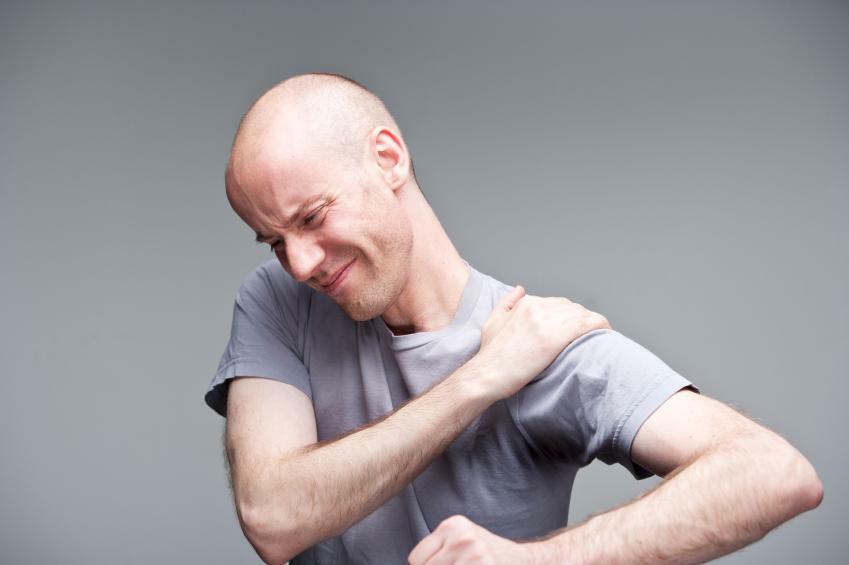
Symptoms of synovitis
Symptoms of the disease:
- appearance of swelling in the chest area;
- the presence of painful sensations with any movement of the shoulder, which increases with load;
- is a manifestation of pain not only directly in the shoulder, but also in the neck or arm;
- sensation of pain in the performance of everyday activities: it becomes difficult to bear even the smallest objects;
- a constant desire to change the position of the hand, even though it is in the usual position for a person;
- the habit of bending the arm at the elbow and pressing it to the chest( this partially relieves the pain);
- temperature fluctuations: most often it increases precisely in the area of the lesion, although it sometimes extends to the entire body;
- low level of mobility of the joint;
- sensation of difficulty when attempting to make rotational movements;
- weakness;
- malaise.

Symptom and temperature with purulent form of synovitis
If it is a purulent synovitis, then the redness of the skin, as well as a strong increase in temperature, are added to the symptoms described above.
It is very important to begin treatment of synovitis of the shoulder joint immediately after the person noticed signs of the disease. The fact is that if you ignore the alarming "signalers", the synovitis can pass from the acute form to the chronic one, and this is fraught with a number of unpleasant complications.

Treatment of synovitis should be started immediately
Complications of
In the event that the synovitis of the shoulder joint develops unhindered, it can lead to acute inflammation of the joint, in other words, purulent arthritis. As a complication, periarthritis( involvement of periarticular tissues) and panartritis( inflammation of ligaments) can develop.
In advanced forms of synovitis leads to the development of phlegmon - a disease with inflammation of soft tissues. A frequent visitor in such situations is sepsis.
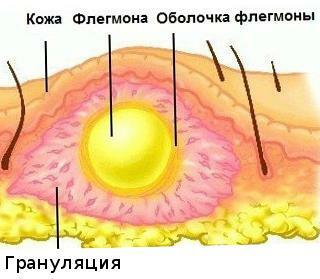
Phlegmon
Diagnosis
Diagnosis of this disease is engaged in traumatologist-orthopedist, who during the interview asks the patient about the illnesses, their nature, frequency and other important factors. In addition, the specialist will know if the patient is not hypersensitive to any drug.
At the reception a person should tell about the way he lives, whether he abuses alcohol and tobacco, likes to go in for sports, etc. Then it is necessary to tell the professional in detail and in detail about what problems the patient is worried about.

Diagnosis of synovitis
In the first stage, the physician performs an external examination that helps him identify abnormal abnormalities in the functionality of the shoulder joint and to see if the spine is curved. However, the data obtained will not be enough to establish a definitive diagnosis, and therefore the specialist will conduct laboratory diagnostics, during which the patient will need to donate blood and urine.

You will definitely have to pass the tests
The doctor also conducts a bacterioscopic examination of the synovial fluid to determine if there is an infectious agent in it.
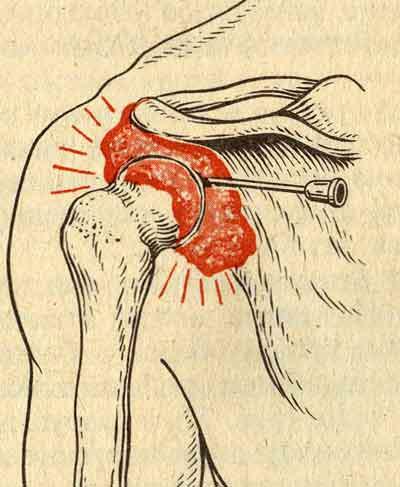
Puncture of the shoulder joint
In order to detect inflammation, pay attention to the red blood cells. At the final stage, the patient undergoes MRI.

Magnetic resonance imaging( MRI)
Treatment of
Today, there are several main ways to combat synovitis of the shoulder joint, but specialists prefer conservative treatment. If necessary, specialists can immobilize the limb with a bandage, a tire or even a gypsum.
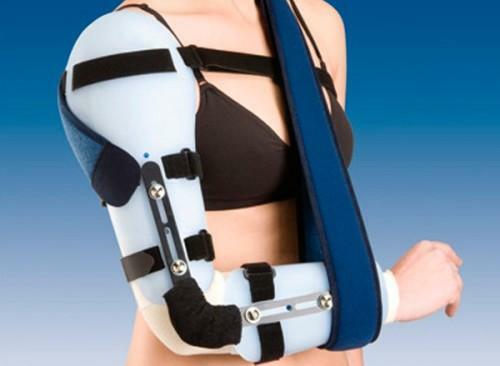
Fixing rail
In the event that too much effusion accumulates in the joint, the professionals perform a puncture. As for medicinal preparations, when synovitis patients take analgesics and antibiotics, the duration of the course is set by the doctor in each individual case.
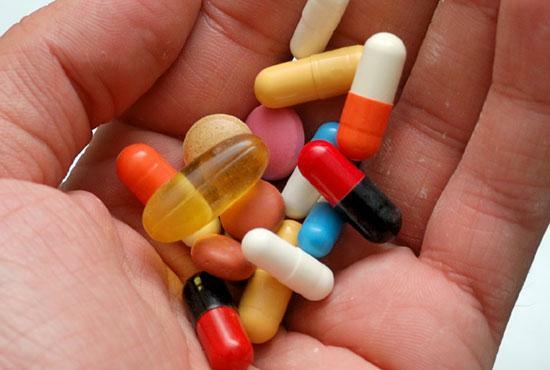
Analgesics and antibiotics - drug therapy
The physiotherapeutic procedures shown in the treatment of the disease include:
- magnetotherapy;
- UHF;
- electrophoresis.

Physiotherapy sessions
After the main stage of treatment is over, a recovery period begins. At this time, the person must make every effort to consolidate the result. The ideal way in this case will be therapeutic and recreational physical exercises and massage sessions. It's too early to throw antibiotics.
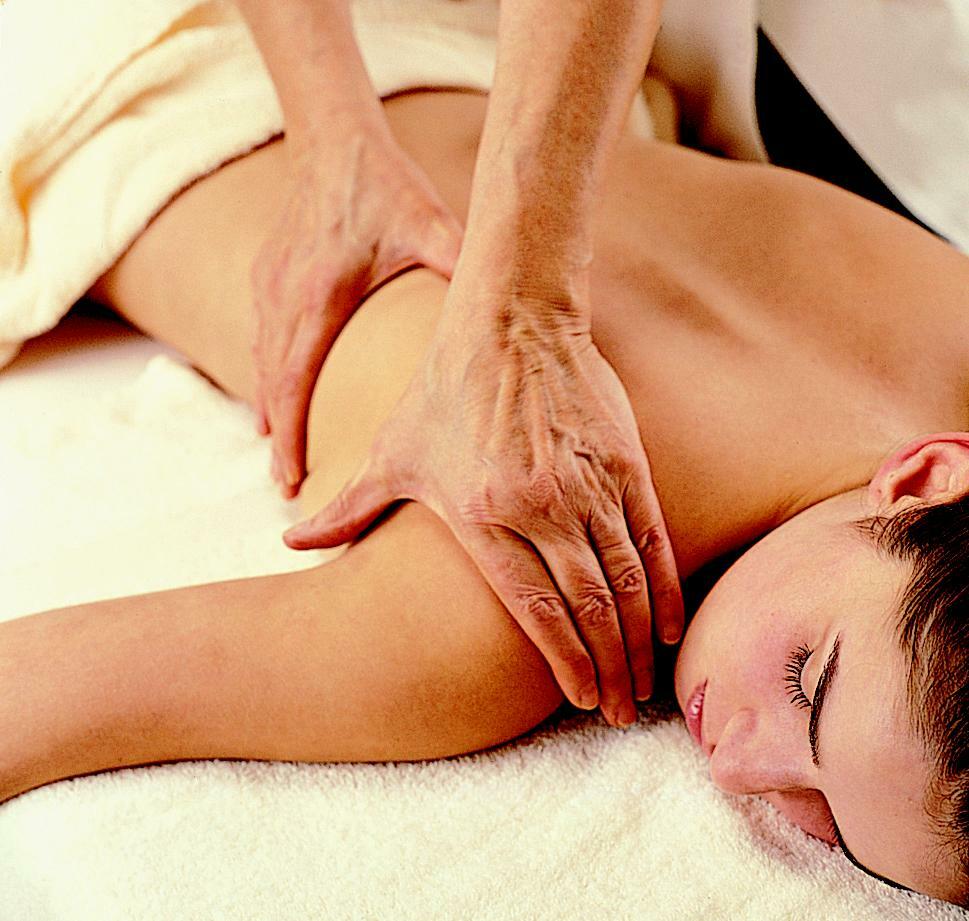
Restorative procedures
As for surgical intervention, specialists resort to it only in the most extreme cases: when the disease is launched so much that conservative therapy is powerless. Most often, the stimulus for surgery is irreversible changes in the shell of the joint.
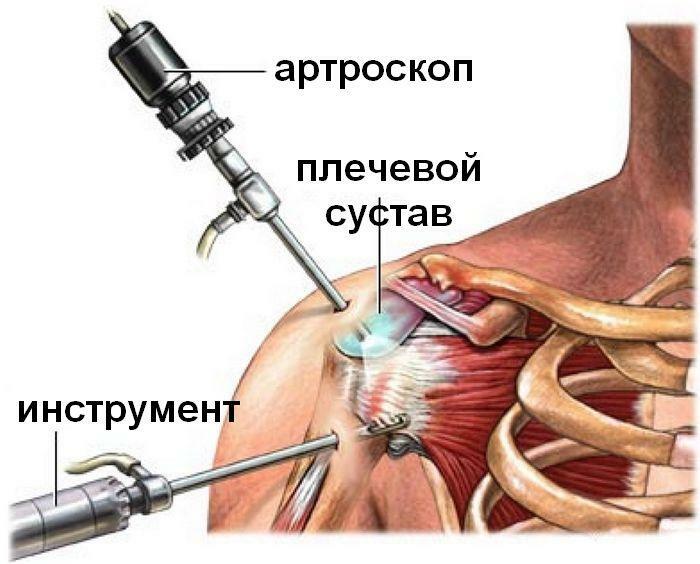
Shoulder arthroscopy
Preventive measures
It can not be said that there are magic means to completely eliminate the risk of developing synovitis of the shoulder joint, but with certain efforts it is possible to lower it as much as possible.
First of all, you need to pay attention to your health and get rid of infectious diseases in a timely manner. A reliable shield against the disease will be sports, but one that does not involve significant stress on the shoulder joint. Take care of yourself and be well!



